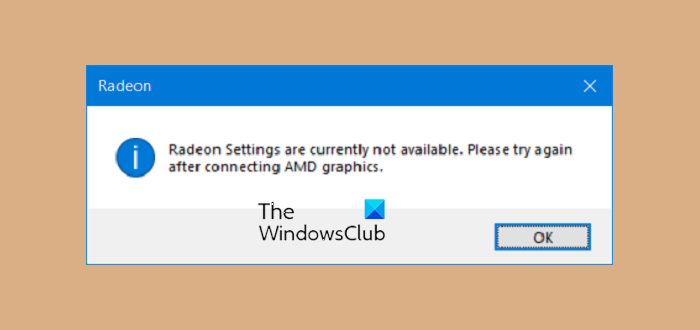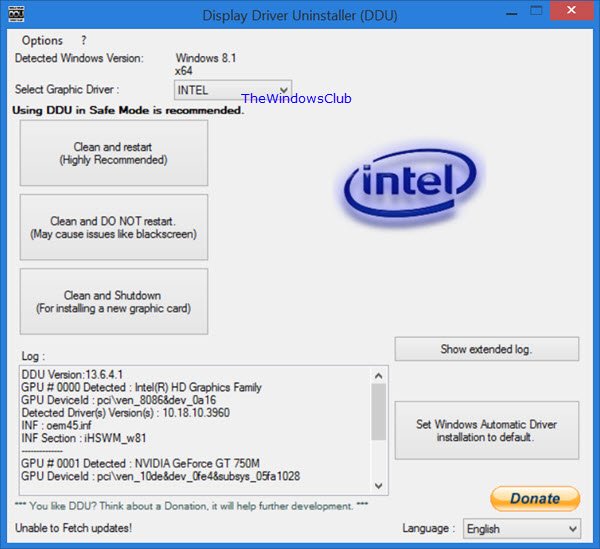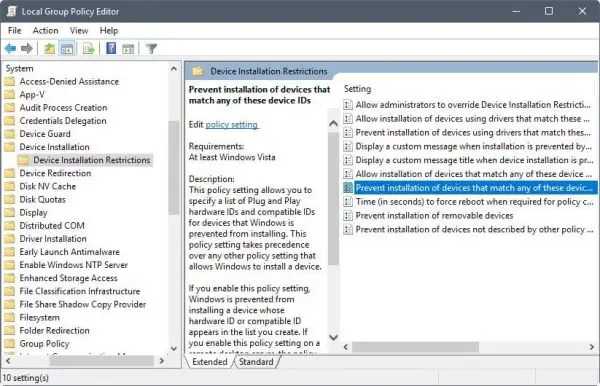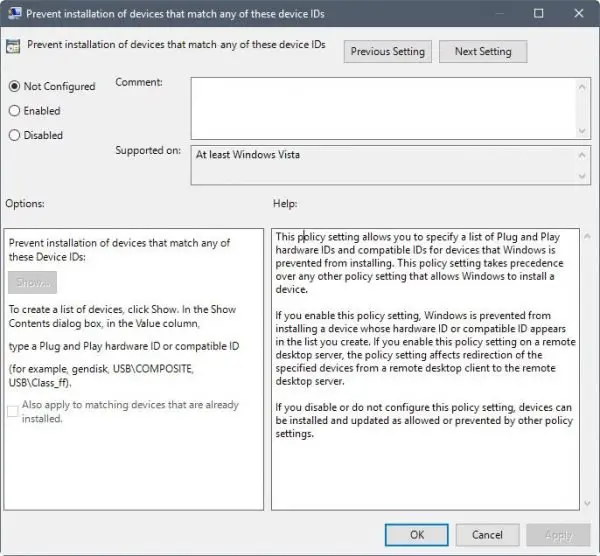AMD’s Radeon Graphics processing units are yet another brand of GPUs that comes in a large number of Windows 11/10 computers. To control the functioning of the hardware, they have included the Radeon Settings panel. However, there have been a number of reports of this Radeon Settings panel throwing an error saying that it is not available.
Radeon Settings are currently not available. Please try again after connecting AMD graphics.

The main causes of this issue are corrupt or incompatible drivers. This leads to a straight and simple solution.
Radeon Settings are currently not available in Windows 11/10
We will be undertaking the following steps to get rid of this error on Windows 11/10:
- Uninstall and fresh install the AMD driver.
- Change Driver Version.
1] Uninstall and fresh install the AMD driver

You can use the Display Device Driver Uninstaller software to uninstall your AMD Radeon Drivers.
Once you are done that, go here to download the AMD Radeon’s official drivers.
After downloading it, you can install it like any other driver by running the executable file.
After the file has finished installing the newer version of the driver, try to run the Radeon Settings and check if that fixes your issues.
Read: Enable Radeon FreeSync for Individual Applications.
2] Change Driver Version
Use the steps in method 1 to uninstall the AMD Radeon driver’s currently installed version.
After it is uninstalled, get on the official AMD Radeon Driver download website and get the last working version of the driver.
If the driver keeps updating, prevent it. To disable the driver getting updated automatically, you can do the following.
Hit the WINKEY + R button combination to launch the Run utility, type in gpedit.msc and hit Enter. Once Group Policy Editor opens, navigate to the following setting-
Computer Configuration > Administrative Templates > System > Device Installation

Now, on the right-side panel and double click on Prevent installation of devices that match any of these device IDs and set the radio button to Enabled for it.
This policy setting allows you to specify a list of Plug and Play hardware IDs and compatible IDs for devices that Windows is prevented from installing. This policy setting takes precedence over any other policy setting that allows Windows to install a device. If you enable this policy setting Windows is prevented from installing a device whose hardware ID or compatible ID appears in the list you create. If you enable this policy setting on a remote desktop server the policy setting affects redirection of the specified devices from a remote desktop client to the remote desktop server. If you disable or do not configure this policy setting devices can be installed and updated as allowed or prevented by other policy settings.

This will turn off the delete confirmation prompt. Setting the radio button as Disabled or Not Configured will turn off the driver being updated automatically.
Under the section of Options, click on the button that is labeled as Show.
In the field that pops up, enter the Hardware ID of your GPU and select OK.
The Hardware ID of your GPU can be found under the following location: Device Manager > <DEVICE NAME> Properties > Details > Hardware IDs.
Click on Apply and then click on OK.
Exit the Group Policy Editor and then reboot your computer for the changes to take effect.
How do I access my AMD Radeon Settings on Windows 11?
To access AMD Radeon Settings on Windows 11, right-click on your desktop and select “AMD Radeon Settings” from the context menu. This opens the interface where you can adjust graphics settings, check for driver updates, and optimize performance. Ensure your video drivers are updated for the best user experience.
How to fix Radeon Settings and driver versions do not match?
To fix the issue of Radeon Settings and driver versions not matching, uninstall the current AMD Radeon Settings app. Next, download and install the latest version of Radeon Settings Lite from the Microsoft Store. This ensures compatibility between the graphics drivers and application, resolving any mismatch problems.
Read next: How to capture Gameplay and stream it via Radeon ReLive.